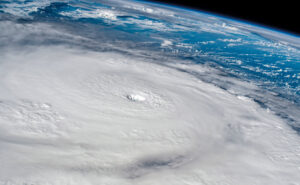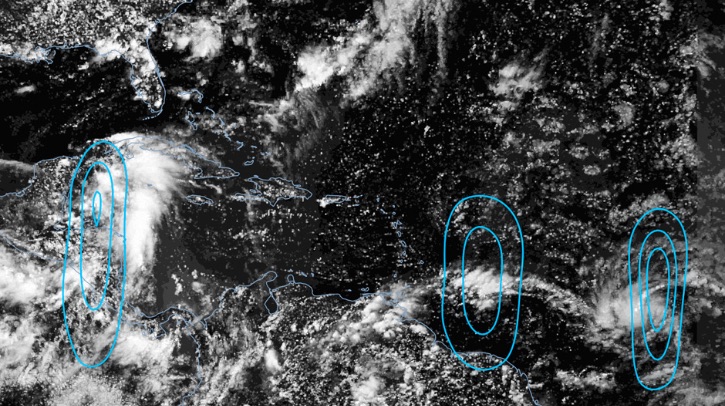Will Downs, a PhD student at the University of Miami Rosenstiel School of Marine, Atmospheric and Earth Science, has created an AI model that identifies and tracks tropical easterly waves that can develop into powerful hurricanes as they travel across the Atlantic Ocean.
“Often originating off the coast of Africa, tropical easterly waves are clusters of clouds and wind that can span several hundred miles. They pass through the Caribbean Sea every few days during the summer and fall, and most of them fizzle out over time, with maximum impacts being localized rainfall and gusty winds,” Downs explained. “But some of these waves develop into tropical storms and hurricanes, such as Ian did in 2022. About 70% of Atlantic tropical cyclones originate from tropical easterly waves.”
Creating the AI model
To create the AI-based model, Downs mined historical weather data compiled by meteorologists at the National Hurricane Center’s Tropical Analysis and Forecast Branch (TAFB). That data included the locations of tropical easterly waves in the Caribbean Sea over the past several decades.
He then combined those historical observations with reanalysis data of past weather and climate conditions, training his AI model to accurately detect not only tropical easterly waves but also important weather phenomena such as the intertropical convergence zone and the monsoon trough in the tropical North Atlantic and eastern North Pacific oceans.
Aidan Mahoney, a PhD student in atmospheric sciences at the Rosenstiel School who interns at the National Hurricane Center through NOAA’s Pathways Program, assisted Downs in understanding tropical wave analysis and supplying him with historical TAFB data.

“My supporting role in this collaboration actually started with a chance conversation about tropical wave analysis at TAFB,” Mahoney said. “Early on, Will knew he wanted to train the tracker on TAFB analyzed tropical wave positions. He came to me with a quick question about TAFB analysis techniques that turned into the first of many long discussions about the complexities of tropical wave analysis and dynamics. And Will developed an expert understanding of the training data and the TAFB analyzed positions, which allowed him to create the best possible version of the tracker.”
A National Science Foundation grant as well as a Provost’s Fellowship in Interdisciplinary Computing helped make Downs’s machine learning (ML) model possible.
He has spent the past two years developing and testing it, achieving accurate results. This year, forecasters at the National Hurricane Center have internal access to Downs’ wave tracker in real time.
“It has captured the waves where they seem to be going, and it’s not generating many false results either,” said Sharan Majumdar, a professor of atmospheric sciences at the Rosenstiel School and Downs’ advisor. “The robust dataset being produced by Downs’ model will help researchers to more effectively study the behavior of these waves on a spectrum ranging from weak clusters of clouds to developing tropical cyclones.”
Machine learning in forecasting
“AI models are essentially augmenting the current physical models,” Majumdar said. “The AI models for metrics such as the hurricane track and other atmospheric metrics that are on the larger scales have done very well, and they are even showing more skill than the physical models. But there are many things like hurricane intensity and severe thunderstorms, for example, where the physics-based models are still probably superior. One will have to train the AI models with information from the physical models, so there’s a symbiotic relationship between the two.”
“My AI model provides more flexibility because it can detect different patterns and detect different strengths and types of tropical waves using its many built-in layers,” Downs said. “But in the scope of overall storm forecasts, there’s still a lot more we have to learn.”
In related news, a group of researchers, including several at Penn State University, recently developed an AI-powered computational model to streamline flood prediction in the continental USA. Read the full story here



